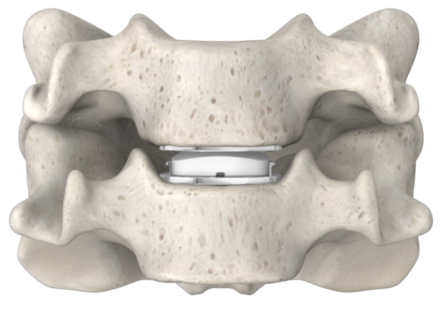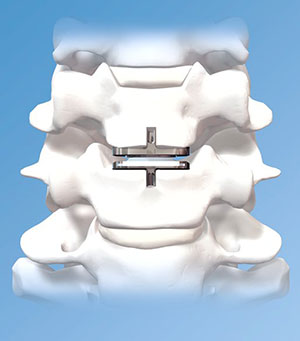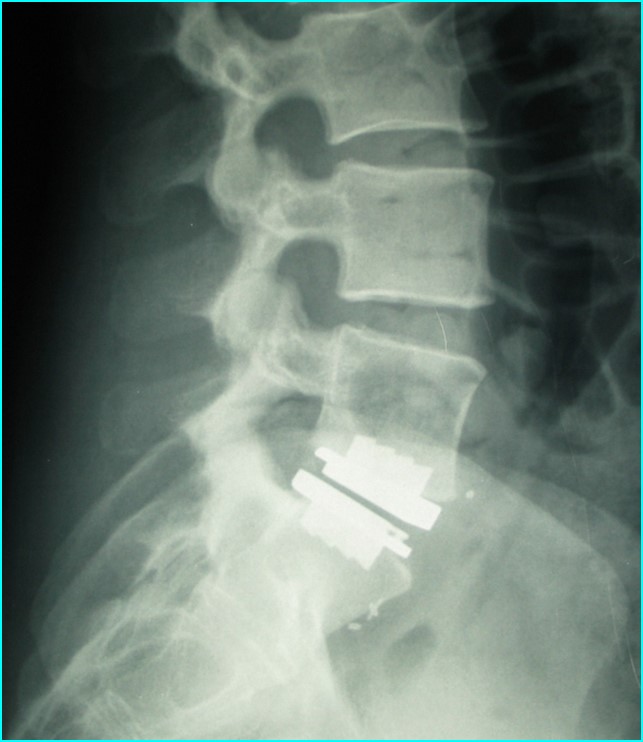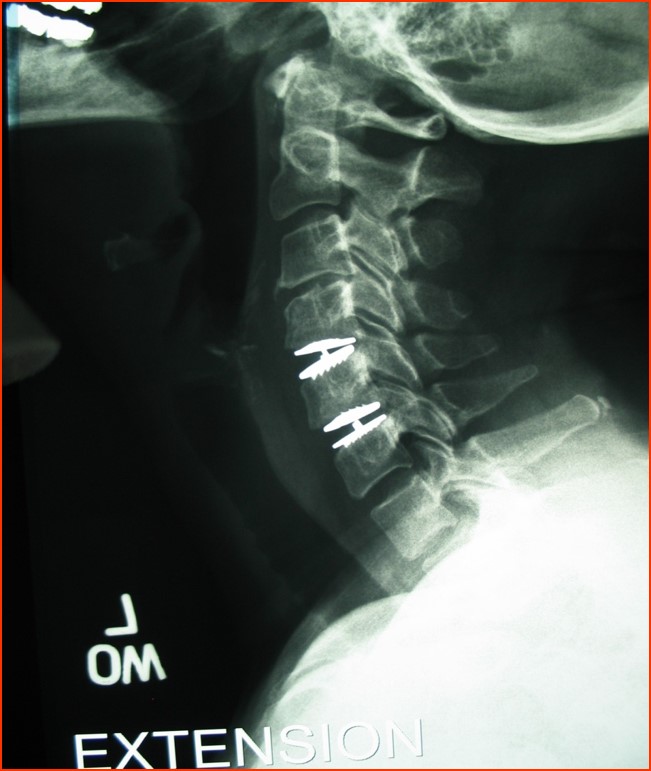Total Disc Arthroplasty -Disc replacement surgery has been available on a limited basis for years, but long-term FDA trials and sound research have made this option more widely available for many patients!
Disc arthroplasty replaces the damaged or herniated disc that causes a patient's pain, and can restore normal disc height, alignment, and biomechanics without fusing the spine. Preserving normal motion can improve the outcome of a spinal operation in terms of pain relief, motion, and function, and reduces the risk that adjacent disc levels will age and fatigue prematurely due to the stress caused by a fusion. I have participated in training programs and research for many of these products, including the ProDisc implant (Centinel Spine - above), the Mobi-C Cervical implant (Zimmer - left), the Simplify implant (Nuvasive), and the M6 implant (Orthofix). I use each in selected patients. |
Motion Preservation
Different artificial discs offer different design features, but all will offer the ability to bend and flex front to back, side to side, and to rotate left and right. These are the motions your normal disc handles every day, that are lost after spinal fusion.
|
Pain Relief and Function
Lumbar fusion is often necessary when degeneration is severe, the spine has become unstable, in in conditions following fracture, infection, or tumor treatment. In younger, more active patients, however, when the disc is painful, deteriorating, but not completely collapsed, lumbar disc replacement is an option worth considering.
|
Good Outcomes
Long-term clinical trials, performed under FDA control, have shown that disc replacement is safe and effective, but also show that there are measureable advantages in pain relief and return to function when compared to fusion surgery. There are fewer complications and fewer reoperations among patients undergoing disc replacement surgery
|



